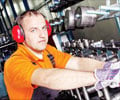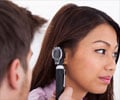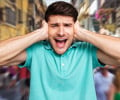- Sensorineural Hearing Loss - (http://www.hearingloss.org/content/types-causes-and-treatment)
- 5 ways to prevent hearing loss - (http://www.nhs.uk/livewell/hearing-problems/pages/tips-to-protect-hearing.aspx)
About
Children can develop temporary hearing impairment due to obstructions in the outer ear or infections of the middle ear.Permanent hearing loss in children can occur due to various genetic or hereditary causes, diseases and other conditions.
Hearing loss in adults can be identified and rectified depending upon the location and cause of the problem. Temporary
What Causes Temporary Hearing Loss?
When hearing loss is the result of problems in the ear canal, ear drum or tympanic membrane,middle ear or its three little bones, the condition is called conductive hearing loss. Depending on the cause, the symptoms and treatment can be varied.Conductive hearing loss is mostly treatable with simple cleaning procedures or antibiotics, if identified and intervened on time.
Occlusion of the ear canal: Cerumen or wax is the most common cause of ear canal occlusion. Foreign bodies, exostosis (benignbony growth in the ear canal), insects, etc may be obstructing the ear canal and as a result, transmission of sounds to the middle ear is limited.
Hearing loss maybe unilateral, that is in one ear, in which the obstruction is present. Pain may or may not be present. The treatment involves removal of cerumen after softening it, and rinsing the ear with body-temperature warm water. However,this kind of treatment has to be done only by a qualified professional and not at home.
Infection of middle ear:Fluid accumulation in the
Antibiotics and proper aural hygiene are the solutions for otitis media. If treatment is delayed further decay of the tiny bones or ossicles may occur as a result of the infection and fluid accumulation. This may lead to permanent damage to hearing.
Hearing loss,ear discharge, pain in the ear, etc are the symptoms of otitis media. The condition can be treated with antibiotics and sometimes surgery. The removal of fluid accumulation is sometimes done by myringotomy or surgically piercing the ear drum, just enough to let out the fluid and allowing the area to eventually repair itself.
Ear Drum Rupture: Chronicotitis media, water accidents, temporal bone fracture and pressure of fluid inside are all the causes for perforation or rupture of eardrum. The rupture can cause hearing loss as the tympanic membrane is unable to vibrate to the sounds and transmit to the middle ear.
Symptoms include painful hearing loss and ear discharge. This condition can be treated with antibiotics and sometimes a simple surgery called tympanoplasty, or repairing theeardrum.
Growth in the middle ear:Fibroma, papilloma, adenoma and other such benign or malignant growths in the ear canal or middle ear can cause hearing loss. This condition may or may notbe accompanied with pain. Depending on the nature of the growth, the prognosis and treatment can be varied.
Cholesteatoma is the thickening of epidermal and connective tissues within the middle ear. The deafness can be progressive and ear drum can be seen as retracted or perforated. Surgery is the only treatment for this condition.
Otosclerosis: Abnormal deposition of bone tissue at the base of the stapes bone is called otosclerosis. This deposition prevents the right kind of movement of the bones and hinders the transmission of sound to the inner ear.
Symptoms include painless, progressive hearing loss, usually occurring bilaterally. This condition is more prevalent in middle-aged women with a positive family history. Surgical modification of the stapes can help prevent further damage to ear and hearing. But if the condition is not treated, the damage can spread to the inner ear and the hearing impairment can be reversed only up to some extent.















